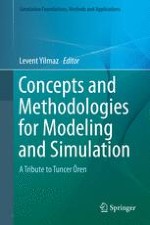2015 | OriginalPaper | Buchkapitel
14. Simulating Human Social Behaviors
verfasst von : Yu Zhang
Erschienen in: Concepts and Methodologies for Modeling and Simulation
Aktivieren Sie unsere intelligente Suche, um passende Fachinhalte oder Patente zu finden.
Wählen Sie Textabschnitte aus um mit Künstlicher Intelligenz passenden Patente zu finden. powered by
Markieren Sie Textabschnitte, um KI-gestützt weitere passende Inhalte zu finden. powered by
